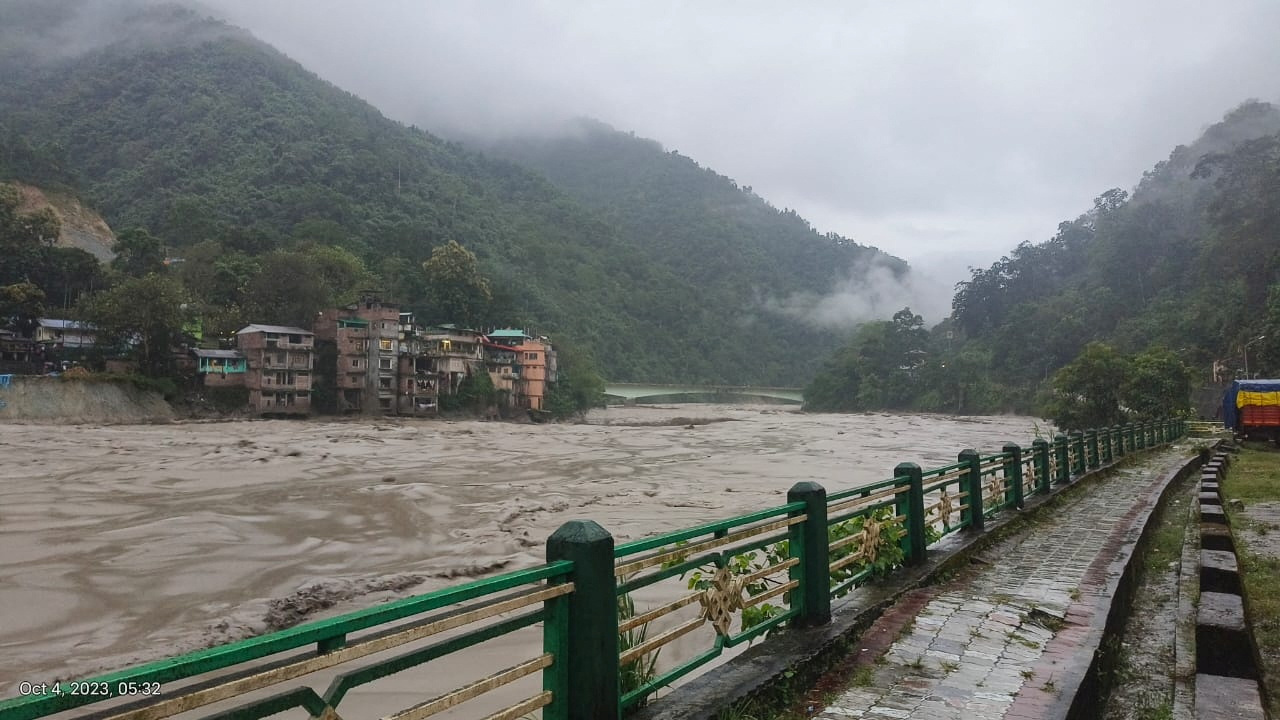Tragedy Strikes Indian Himalayas: Flash Floods Claim 74 Lives, 100 Still Missing as Lhonak Lake Bursts

Tragedy Strikes Indian Himalayas: Flash Floods Claim 74 Lives, 100 Still Missing as Lhonak Lake Bursts
In a devastating turn of events, the tranquil region of Sikkim in India’s Himalayas has been gripped by a catastrophe of unparalleled magnitude. Flash floods, unleashed by the bursting of Lhonak Lake, have left a trail of destruction in their wake. As the nation grapples with this unfolding disaster, the death toll has surged to a staggering 74, and the anguish continues to mount as 101 people remain missing in the aftermath of this calamity. The incident, precipitated by days of torrential rain, has plunged the region into a state of despair, leaving behind a haunting reminder of the region’s vulnerability to the capricious forces of nature.
The northeastern state of Sikkim, nestled amidst the grandeur of the Himalayas, was the epicenter of this catastrophe. Torrents of water, cascading down narrow river valleys from the fragile Lhonak Lake, wreaked havoc on its course. The impact was catastrophic, damaging a dam and causing extensive devastation in villages and Rangpo town, situated approximately 50 kilometers (30 miles) to the south of the state capital, Gangtok.
As rescue operations unfolded, grim discoveries marked the days following the disaster. Rescuers have located 25 bodies within the state of Sikkim itself, while the lifeless forms of eight army personnel were found downstream in the neighboring state of West Bengal. This heart-wrenching loss encompasses individuals from all walks of life, underlining the indiscriminate nature of such natural disasters.
Tragically, the unfolding tragedy has taken a severe toll on the armed forces as well. Among the missing, a somber count of 14 army personnel adds to the mounting sorrow. These brave individuals, who have consistently stood as a bulwark against adversity, are now counted among the missing, highlighting the perilous conditions in which the rescue efforts are being conducted.
/cloudfront-us-east-2.images.arcpublishing.com/reuters/HHBNG3NPIBLGLPEEZVD75CDYJM.jpg)
The herculean task of searching for survivors has been encumbered by a trifecta of challenges: damaged roads, impaired communication networks, and uncooperative weather conditions. The torrential downpour and subsequent flash floods have left a trail of destruction in their wake, making it arduous for rescuers to access the affected areas promptly. This, coupled with the relentless fury of Mother Nature, has culminated in a desperate race against time.
The affected communities, already reeling from the trauma of this catastrophe, face another uphill battle as they grapple with the aftermath. Clearing the sludge and debris that now inundate their homes and streets has become a grueling task. For many residents, this marks one of the worst disasters to have struck their remote region in over half a century, plunging them into an abyss of despair and uncertainty.
Parveen Shama, the top district official of Jalpaiguri in West Bengal, reported the discovery of 41 bodies in the district. The sorrowful echoes of this tragedy have reverberated across state boundaries, transcending geographic divisions and underscoring the shared grief of the affected regions.
Sikkim, a tranquil Buddhist state nestled amidst the towering peaks of the Himalayas and flanked by Nepal, Bhutan, and China, has borne the brunt of this calamity. Its population of 650,000, already contending with the challenges of residing in this rugged terrain, now grapples with the enormity of the disaster that has befallen them.

The catastrophic trigger for this calamity was the relentless rain that lashed the region for days. In the first five days of October alone, Sikkim received an astonishing 101 millimeters (four inches) of rain, which was more than double the normal levels for this time of year. This deluge of rainwater saturated the already fragile landscape, setting the stage for the disaster that was to follow.
At the heart of this disaster lies Lhonak Lake, a substantial glacial bullet-shaped reservoir nestled at the foot of a melting glacier. An analysis of satellite imagery reveals the grim reality: more than 60% of the water held in the lake drained out after the extreme rainstorm triggered a glacial lake outburst. This perilous phenomenon occurs when a glacial lake’s water levels rise to precarious heights, or when the surrounding land or ice gives way, leading to a catastrophic breach of the lake’s confines. In this instance, the resultant surge of water and debris raced down the steep mountainsides with devastating consequences.
Scientists have long scrutinized Lhonak Lake, identifying it as one of the fastest-swelling glacial lakes in the region, replete with a high-risk factor for potential glacial outbursts. Multiple studies have sounded the alarm about the vulnerability of this natural reservoir, underlining the urgent need for mitigation measures to avert such catastrophic events.

As the nation mourns the lives lost and prays for the safe return of the missing, this disaster serves as a stark reminder of the fragile equilibrium that exists in the Himalayan region. The delicate balance between nature’s beauty and its devastating power is on full display, urging authorities and communities to come together in their efforts to prevent such tragedies in the future.
In the coming days, the focus will undoubtedly shift from the grim statistics to the resilience and determination of the affected communities. The road to recovery will be long and arduous, but the indomitable human spirit, coupled with support from across the nation, will undoubtedly lead these communities toward healing and restoration. For now, the prayers of an entire nation are with those affected by this heart-wrenching disaster in the Indian Himalayas, a stark reminder of nature’s formidable might.




